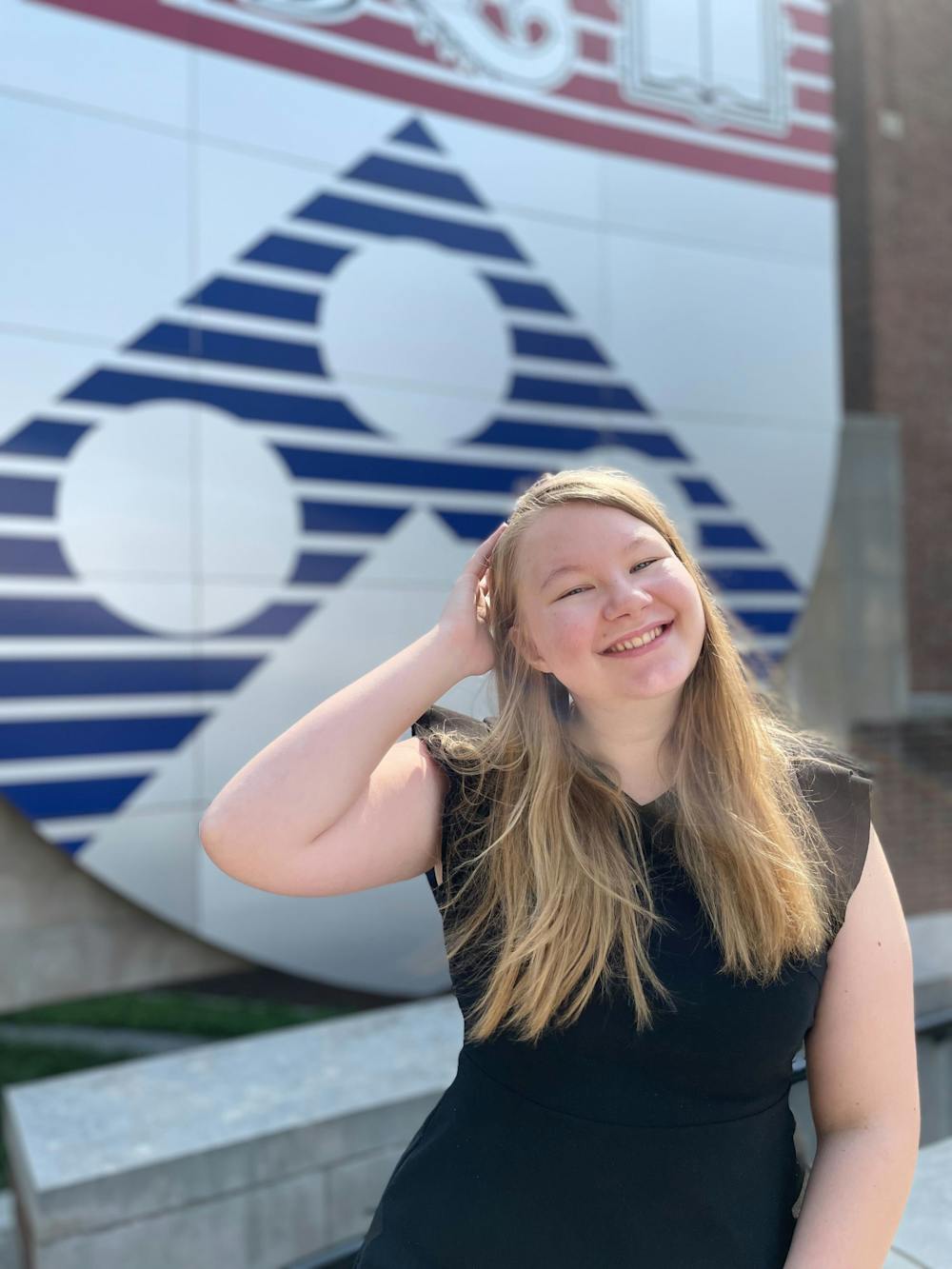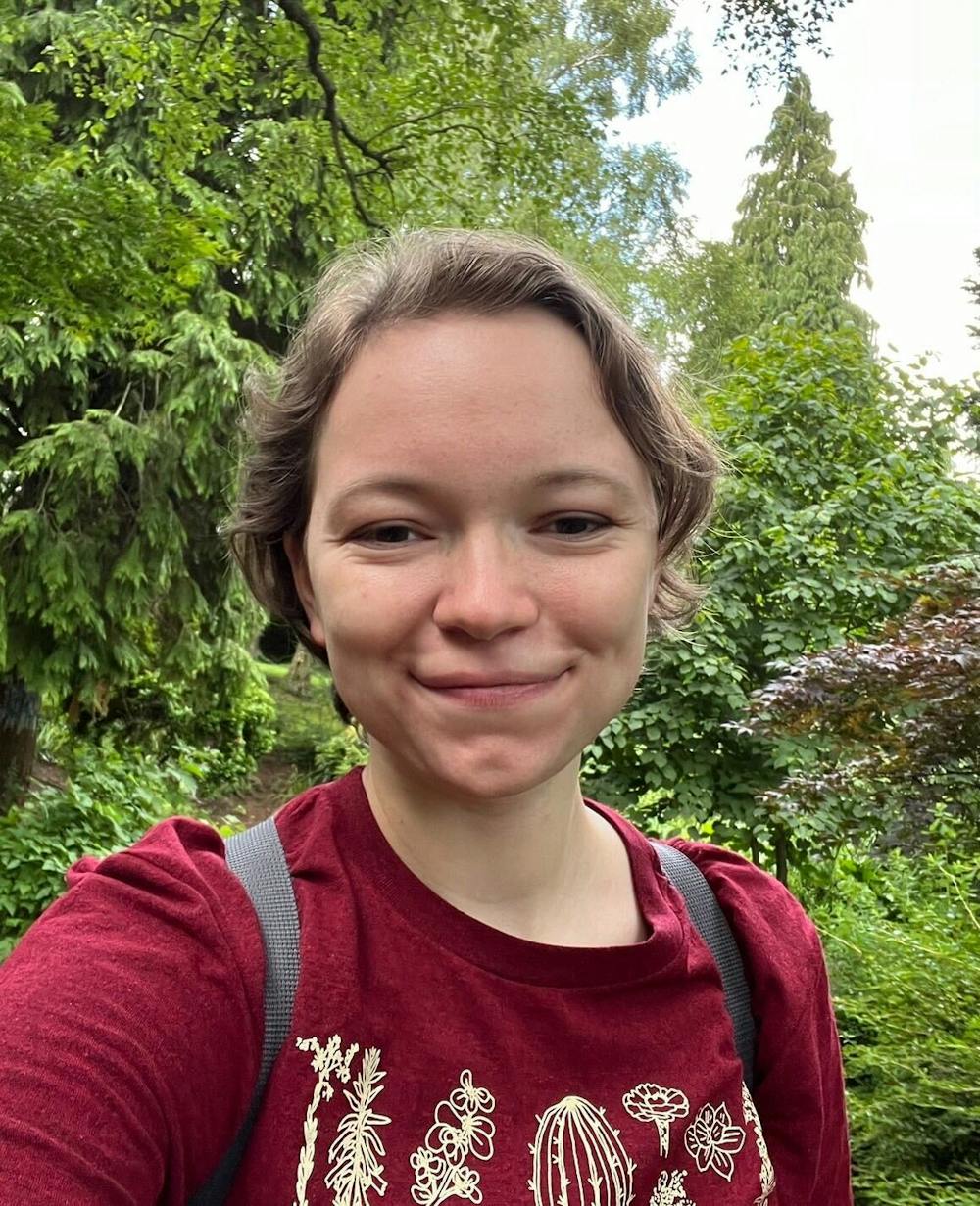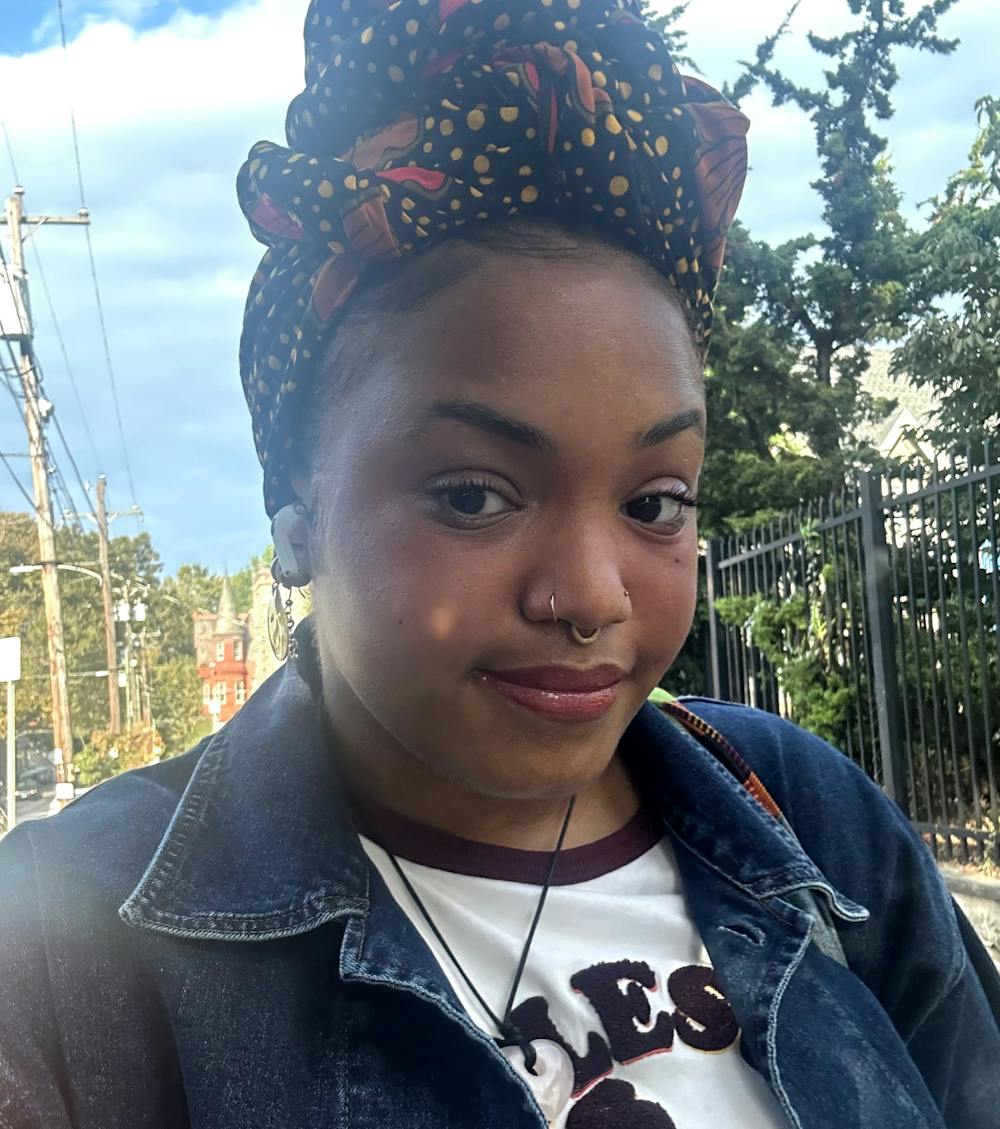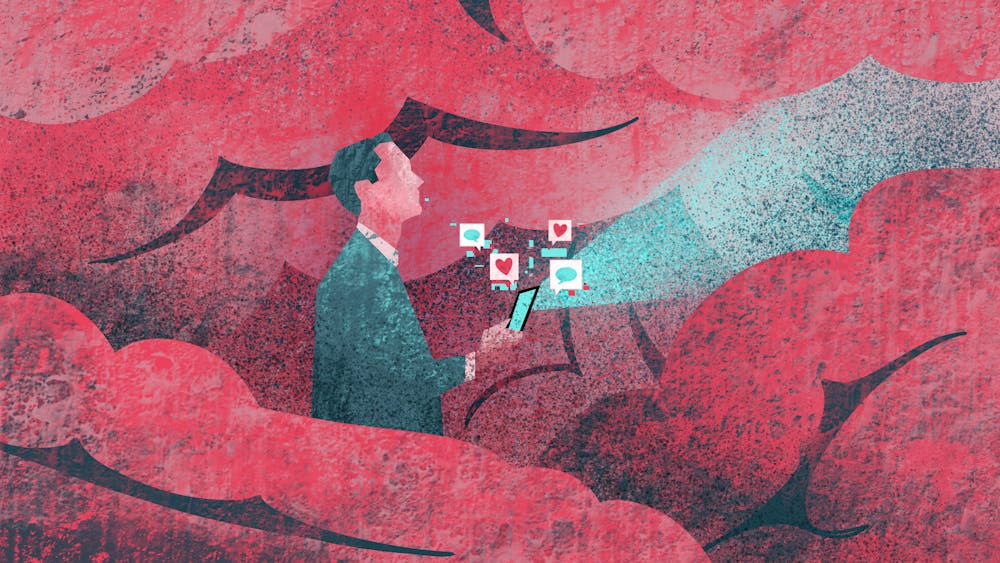Put a finger down if you love eating the same foods over and over again. Put a finger down if you don’t eat. Put a finger down if you pick at your fingers a lot … and put a bonus finger down if it’s because it helps you focus. If you put more than six fingers down, you might have ADHD.
If you spend time scrolling through TikTok or Instagram reels, you’ve likely encountered a video like this: a content creator sits in their bedroom or on their couch, the camera angle capturing no more than one of their shoulders. They hold up one hand as a faceless speaker in the background audio rattles off a list of traits, fingers slowly folding down to indicate which traits they do and don’t relate to. In fact, social media posts encouraging viewers to measure themselves against diagnostic criteria for various mental health disorders have been on the rise since the pandemic. While these videos address a number of conditions, an increasing number center around neurodivergence, the range of distinct cognitive functioning that includes autism, ADHD, dyslexia, Tourette syndrome, and more.
In response to these social media trends, many mental health professionals are voicing concerns that teens are making inaccurate conclusions about themselves. Since diagnosis is a complex process that can include psychological evaluations, physical exams, and long-term monitoring, professionals generally agree that consultations with therapists and licensed mental health professionals are a more reliable way of exploring diagnostic options. However, when it comes to neurodivergence, this viewpoint doesn’t capture the whole story.
Jon Argaman, a critical writing instructor at Penn whose research focuses on neurodiversity and writing, explains that formal diagnoses and self–diagnoses have different uses. Whether a neurodivergent person chooses to pursue a formal diagnosis or not largely depends on what they’re hoping to achieve.
A formal diagnosis often provides access to specific services. For students, this could look like school accommodations, such as those provided by Penn’s Weingarten Center. On the other hand, self–diagnosis helps people make sense of their experiences and understand where to seek out support. “If you think, ‘I might be autistic, or I might have ADHD,’ then … it helps you search for the kinds of things that have been helpful to other autistic people and people with ADHD,” Argaman says.

Photo courtesy of Terhi Nurminen
According to Terhi Nurminen (C, E ‘25), a founding member of Advocates for Neurodiversity (AND), those who exhibit stereotypical signs of neurodivergence as children are often able to get tested and diagnosed at a young age. But not everyone shows their neurodivergence the same way, and many people go through the primary education system without anyone around them realizing they’re neurodivergent. This teaches them how to manage their neurodivergence without any outside help, at which point formal diagnosis may no longer be a practical or helpful option. In this case, Terhi personally sees more value in the understanding and community that comes with self–diagnosis than the “professional stamp of approval” offered by formal diagnosis.
Remaining self–diagnosed often isn’t a choice. Alasia Williams (C ‘24) is the co–president of AND and identifies as neurodivergent. She says racism and sexism make it difficult for marginalized groups to receive the care that they need from mental health professionals. Black men are routinely over–diagnosed for ADHD because their teachers in school report them for being hyperactive; in reality, they’re being unfairly held to higher standards of behavior than their white counterparts. On the flip side, Black women are often underdiagnosed for ADHD because ADHD can manifest in the form of inattentiveness and impulsivity. However, stereotypes that Black women are “lazy” and “defiant” can cause mental health professionals to not take Black women as seriously when they’re seeking diagnoses.
“The main conception of anyone getting diagnosed with a neurodiversity identity tends to be a very young white boy who is cishet and is upper middle class or higher,” says L.E. McKeown (C ‘24), co–president of AND and an autistic self–advocate, a neurodivergent person who speaks up for their experiences. They’re also a disability consultant who’s given lectures on the basics and sociology of autism at various universities. L.E. explains that people who aren’t white or male are typically socialized to believe they’re not allowed to externalize their neurodivergence, so they turn their behaviors inward. In a vicious cycle, those who aren’t as visibly neurodivergent are diagnosed less frequently, further enforcing the belief that their demographic isn’t diagnosable, which reduces available support.
Unlike more prevalent mental health conditions like depression and anxiety, there is less research on neurodivergency, as well as fewer mental health professionals who specialize in identifying and supporting neurodivergent individuals. Alasia notes that comorbidities between types of mental health conditions can cause mental health professionals to issue inaccurate diagnoses. For example, autism and borderline personality disorder share symptoms, which can make it hard to distinguish between the two.

Photo courtesy of L.E. McKeown
L.E. experienced firsthand the challenges associated with getting a formal diagnosis. The average cost of an autism diagnosis in the US is between $1,000 and $2,000, but it can cost several thousand more depending on how much insurance is willing to cover. While L.E. was able to find an option that was “considered the cheaper side of [an] autism diagnosis,” it was still “incredibly expensive.” L.E. also struggled to find a place that would diagnose women and adults—the only reason they were able to receive a diagnosis was because they were 17 years and ten months old at the time. “They said if I had waited any longer, they would not have diagnosed me.”
After finding a practice that would diagnose them, L.E. had to travel from Philadelphia to New Jersey for the evaluation, where the diagnostician was “incredibly rude the entire time.” Afterward, L.E. felt uncomfortable reading the diagnostician’s report. “You are objectifying and medicalizing me in a way that does not sit right with me,” they say, “but I needed you in order to gain access to something that can give me access to equality.”
With all of the challenges and complexities that come with pursuing a formal diagnosis, many neurodivergent people are left to seek out resources and support on their own. “There’s essentially no such thing as seeking out information online that does not involve social media,” Argaman points out. He says that because social media is so pervasive, it’s the place people naturally turn to when searching for information on their own neurodivergence, which can yield both green flags and red flags.
Social media allows for the creation of communities where people can unite over shared experiences. “I don’t see a reason why it would not be okay for people to explore these things themselves and self–identify and find community based on that,” Terhi says. Argaman, too, explains that it can be freeing for neurodivergent people to find others online who can validate their experiences instead of pathologizing them.
Despite growing up in a pretty populated area, Argaman didn’t encounter many people with stories similar to his until getting an “internet account” at the age of 13. He describes the feeling of finding community online as “very normalizing … and grounding.”
Alasia agrees that open dialogue online can reassure neurodivergent people that they’re not alone in their challenges and encourage greater understanding by their non–neurodivergent peers. “The more neurotypical people that are exposed to neurodivergent communities … the broader understanding and bandwidth [we have] for how complicated human beings can be,” she says.
Because neurodivergence is often identified by medical professionals through the lens of assessing deficits, it can be difficult for high–achieving neurodivergent students—who may outwardly struggle less with their academics—to access the support they need.
According to Terhi, this narrative applies to many neurodivergent students at Penn who excelled in their classes growing up, causing other signs of neurodivergence to be overlooked by teachers and parents. When these students find themselves struggling in college, they may blame themselves for their perceived shortcomings.
Where professional support fails, social media can be a valuable tool to fill in the gaps. “Social media can help you understand that … what you’re experiencing [may not be] universal,” Terhi says. Neurodivergent people are “incredibly misrepresented” in the education, healthcare, and professional systems, L.E. says, which is why social media is extremely valuable in allowing people to learn about neurodivergence from members of that community.
Still, the nature of social media lends itself to the spread of misinformation, often making it difficult to tell what is true and what isn’t. One example is the “superpower narrative,” where traits of neurodivergence are sensationalized in an overly positive light. For example, different pattern recognition styles in autistic people are seen as a positive trait, when in reality, they are neutral things that have been assigned a value.
“It’s not anyone’s fault. It’s simply because people want to see good in themselves after only being told so much bad,” L.E. says. “Social media is one of the only places where that can happen, which then makes [information] spread like wildfire, whether or not it’s true.”
L.E. also expresses that neurodivergent content creators are not immune to spreading misinformation. The neurodiversity movement itself is relatively new as a social justice movement, with new information constantly being presented and previous information debunked.
When people are beginning their own self–discovery, they often document their experiences on social media while they continue to learn about their neurodivergence. Because they’re not yet fully informed on everything that they’re learning, their content runs the risk of presenting reductive, black–and–white information, Terhi explains. This often leads to a lack of nuance in social media content published by people who are still in the process of learning about themselves.
For example, up until 2013, it was impossible for someone to get diagnosed with both ADHD and autism, so content creators with both may attribute their experiences to ADHD only, which can skew popular perceptions of what ADHD really is. “There is a lot of content [on social media] that’s not wrong, but it’s not necessarily giving you the full picture,” Terhi says.
With many people turning to social media as a starting point for self–exploration, there’s an ongoing debate—both inside and outside the neurodivergent community—about whether people should be diagnosing themselves based on their own research.
“Whenever you have a diagnostic category, there will always be false positives and false negatives, meaning you’ll never be able to draw criteria that are so good you only get the people who should be diagnosed. It’s just not a thing,” Argaman explains. He believes that concerns about self–diagnosis are generally driven by the question of whether it’s worse to generate more of these false positives or false negatives from a set of diagnostic criteria.
“My view with neurodiversity, especially around issues of self–diagnosis, is that the harms of false negatives are worse than the harms of false positives,” he says. “I believe in drawing the lines fairly extensively because I think there’s more good in capturing a wider range of people than not.”
Argaman points out that there is a distinction between someone adopting a label for a neurodivergence and someone presuming that they’re an authority on the neurodivergence when they may not be. “The thing I caution people against isn’t about labeling,” he clarifies. “It’s about taking the enthusiasm and excitement of finally finding the thing that describes your experience and assuming it applies to other people more fully than maybe it does.”

Photo courtesy of Alasia Williams
Alasia believes that social media trends that encourage people to explore diagnosis on their own fall into a tricky area. She says that it’s important for people to have insight into their symptoms, and having an idea of why one might be experiencing certain things can assist them in seeking out guidance from mental health professionals. However, a challenge that arises with these trends is that viewers may prematurely jump to conclusions about themselves based on incorrect assumptions.
“People seeing a TikTok [might say], ‘Oh, this person with autism does this thing that I do.’ The reason that you also do that action may not be autism,” she says. However, if while doing further research on autism or checking the Diagnostic and Statistical Manual of Mental Disorders, someone finds themselves identifying with what they’re finding, it could be worth talking to a professional. Alasia believes that if social media helps a person figure out something new about themselves, that may not be a bad thing.
A part of L.E. worries that misinformation on social media can make it even harder for the neurodivergent community to interface with outsiders. They’re less concerned about self–diagnosis itself, and more about medical professionals and policymakers who are in positions of power encountering misinformation on neurodivergence and using it to make decisions about the way neurodivergent people are treated.
At the same time, L.E. supports those trying on different labels and exploring their identities, since, similar to gender, neurodivergence is a partly social construct.
“So far, [autism has] been entirely defined by people who aren’t autistic,” they say. “If someone sees value in being autistic, I’m not going to say no to them because I think that at least means we’re moving in the right direction, that societal opinions [on autism] are no longer coming from such a vehement and violently opposed state, but are coming from a place of understanding and acceptance.”
Indeed, while formal diagnosis processes involve consultations with professionals and assessments according to set diagnostic criteria, Terhi emphasizes that neurodivergence is ultimately defined by the lived experiences of neurodivergent people.
“Even if some professional says, ‘Oh, you don’t fulfill this one checkbox in the diagnostic criteria,’ does that mean [someone isn’t] allowed to be part of [a] community that helps them?” Terhi asks. “I think that it’s silly to think that a professional who observes you for only a few hours should be given the power to make the decision, when the outcome of [formal] diagnosis is most of the time just giving you the validation that you can be part of this community.”
The importance of community within neurodivergent circles cannot be overstated. AND released the following official statement: “AND is open to anyone, regardless of diagnosis. This includes people who are self–diagnosed/self–identified, people who are trying on labels and seeing what fits, and people generally moving around and appreciating the space and community of neurodiversity.”
Argaman encourages people to adopt a learner’s mindset when beginning their research into a potential diagnosis. Instead of viewing information through the lens of seeking a diagnosis, he encourages people to simply learn about the experiences of others and ask themselves, “What resonates, and what feels familiar?” There are reputable books and websites that provide self–assessment tools for various types of neurodivergence, and those with access to a psychologist can take those test results to them and ask how they can learn more.
Social media algorithms tend to trap users in an echo chamber of content that is similar to what they’ve previously already interacted with, without regard for whether or not the content is true. Argaman urges people to seek out information outside of their regular online channels to avoid falling into an “infinite loop of videos that refer to each other.”
Alasia recommends looking into academic research papers (for those who can access them) and information from accredited sources like universities, professors, and medical professionals. L.E. also encourages people to seek out the experiences of self–advocates—one of the best ways to understand how neurodivergent experiences line up with one’s own. Above all, they stress the importance of recognizing misinformation and triangulating sources whenever conducting research.
“[Self–diagnosis] is a way to disrupt the system, so to speak. It’s a way to say that neurodivergence is an identity, not a diagnosis,” L.E. says, “and only we get to decide what our identities are.”

